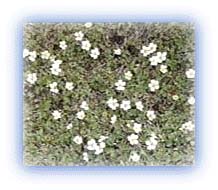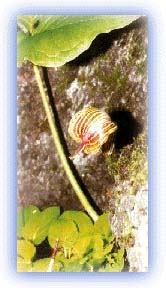Flora and fauna
General Info
· Flora
· Tropical Forests
· Temperate Forests
· Sub-alpine forests
· Alpine scrubs
· Fauna
· Mammals
· Birds
Why are these animals endangered?
How much money do the poachers make?
Protected Areas
· Nepal
· Royal Chitwan National Park
· Royal Bardiya National Park
· Mt. Everest National Park
· Langtang National Park
· Rara National Park
· Makalu-Barun National Park and Conservation Area
· Shey Phoksundo National Park
· Khaptad National Park
· Koshi Tapu Wildlife Reserve
· Parsa Wildlife Reserve
· Royal Sukla Phant Wildlife Reserve
· Dhorpatan Hunting Reserve
· Annapurna Area Conservation Project
· India
· Corbett National Park
· Nanda Devi Sanctuary
· Nanda Devi
· Inner Sanctuary
· Outer Sanctuary
· Present day Scenario
Valley of Flowers
· Hemis National Park
· Pin Valley National Park

![]()
|
Kangchendzonga National Park This national park covers the northern and north-western part of Sikkim. The extreme northern part of this protected area lies in the Himalayan cold desert region. The rest of the park have dense forests. Except for stray alpine pastures the entire tract is barren. |
The magic of the Bhyundar Valley or the Valley of Flowers (Download Realplayer) |
Many species of rare Himalayan mammals and birds occur in that part of this park. Amongst them are the snow leopard and snowcock.
Valley of Flowers
About 45 kilometers from its source, the Alaknanda is joined by the
Bhyundar Ganga at Govindghat, on the
Rishikesh-Badrinath route, in the Garhwal Himalayas of India. This is
the roadhead for the trek to the Valley of Flowers.
 |
| Himalayan Edelwiess flower Credit: Karamjeet Singh |
The Bhyundar Valley was christened by the English mountaineer Frank Smythe when he stumbled upon it while returning from an Expedition to Kamet in 1931. He was captivated by its beauty and proceeded to write the book "The Valley of Flowers" which was responsible for making the remote valley a popular destination among nature lovers.
From the roadhead at Govindghat, it is a long 14 kms trek to Ghangria. Since only day visits are allowed to the Valley, Ghangria serves as the base and it is usually filled with people. The trek takes a good six to seven hours and many find the going tough. The scenery is however delightful with alpine forests all around and the Bhyundar Ganga roaring past you, especially if you visit in the rainy season when the river has maximum water.
 |
| Flowers at the Valley of Flowers Credit: Karamjeet Singh |
After crossing the toll-gate near Ghangria, one finally starts on the delightful walk towards the valley. Since a relatively lesser number of people visit the Valley, and horses are not allowed in any more, the trek is more peaceful and enjoyable. The approach to the main valley leads through lovely dense forests of oak, spruce and silver birch.
The Valley of Flowers itself, is a classic U-shaped valley - a work of the Tipra-Kharak glacier. Over millions of years, glaciers have advanced and receded many times. Today's Himalayan glaciers are only a pale shadow of their former selves as they have been receding ever since the last Himalayan Ice Age. However, the rich morainic soil left by the glaciers proved to be ideal and numerous varieties of alpine flowers took bloom.
 |
| Famous Cobra Lily of Valley Of Flowers Credit: Raj Shirole |
The rainy season - in August and September - is the best time to visit the valley, as around 300 varieties of alpine flowers bloom and turn the valley into a veritable Shangri-La.
The famous resident of the Valley of Flowers is undoubtedly theCobra Lily. Named for obvious reasons, the lily is quite common throughout the valley, although a good specimen is difficult to find.
Another rare flower in the region is the Himalayan Blue Poppy. It can also be found on the roadside the trek to Hemkund. It is beautiful to look at and stands out against the backdrop of rocks.
 |
| Cobra Lily - an apt name. Credit: Raj Shirole |
However, the tremendous attention that the valley has received may well lead to its doom. Fearing environmental degradation, the government of India declared it a National Park in 1981, and placed it off-limits to the migratory graziers whose animals, according to the short-sighted officials and environmentalists, would graze in the valley and destroy the ecological balance. No attempt was made at the time to understand the role played by the graziers and their flocks in the extremely delicate alpine eco-systems. The officials worked on the evidence that sheep ate up vegetation and so, obviously, the solution is simply to ban the sheep.
 |
| The rare Himalayan Blue Poppy Credit: Raj Shirole |
What has happened over the last decade and a half is simply the invasion by a tenacious weed by the name of Polygonum, and since the sheep, which had a liking for it, were so conveniently removed by the declaration, it has swamped the more delicate alpine flowers which made the valley famous.
Frank Smythe mesmerised by the Himalayan Primula at the Valley of Flowers. (Download Realplayer) |
The tall plant, with numerous pink flowers, has now been shorn of it's natural predators. It is tough and has great regenerative capacity, like other weeds. Thus unsurprisingly, weed control measures have met with little success. Instead the pastel hues of the alpine meadows have given way to large, broad patches of pink as the ever expanding Polygonum elbows aside the smaller and more delicate varieties of alpine flowers that so charmed Smythe and generations since.
The ministry of Environment needs to reconsider the situation in terms of grazing, not only for the Valley of Flowers, but also for relevant and non-intrusive Himalayan policy planning in the future.
All rights reserved